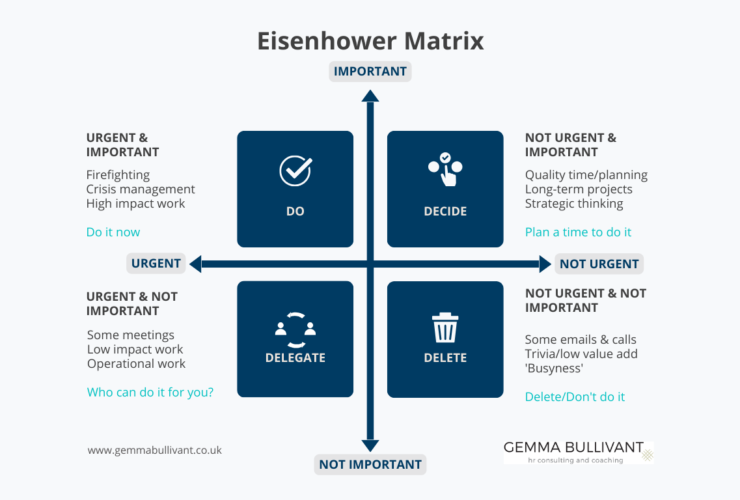
Strategic thinking is not just for the boardroom.
We can (and should) take a more strategic approach to most things we do.
In Episode 9 of The Strategic Leader podcast, we introduce the Four P’s Model, a simple yet powerful framework to guide strategic thinking with a structured approach to understanding and achieving goals, ensuring that actions are aligned with a broader strategic vision.
Understanding the Four P’s Model:
-
Purpose (Why):
The first P, Purpose, prompts individuals and teams to ask why they are engaged in a particular task or project. This involves understanding the overarching goal, whether it’s a high-level organisational objective or a specific project purpose.
Purpose sets the context for strategic thinking by encouraging a broad perspective and long-term view.
Practical Example: If considering a Diversity and Inclusion (D&I) strategy, the purpose might be to create a diverse and inclusive workplace where every employee can thrive.
-
Pursuit (Where):
After establishing the purpose, Pursuit narrows the focus by defining specific goals and objectives. This step involves clarifying where the organisation or team aims to go, outlining measurable outcomes that contribute to the overall purpose.
Pursuit adds specificity to the strategic vision, providing clear direction for the next steps.
Practical Example: In the D&I strategy, Pursuit could involve setting goals like increasing diversity in leadership roles by a certain percentage over a defined period.
-
Process (What):
With purpose and pursuit in mind, the third P, Process, addresses the actionable steps required to achieve the defined goals. It involves determining what needs to be done, outlining specific initiatives, projects, or tasks.
This step ensures that actions are not only relevant but also strategically aligned with the purpose and pursuit.
Practical Example: Actions under Process for the D&I strategy might include implementing unconscious bias training, eliminating gendered language from job descriptions, or introducing mentorship programs.
-
People (Who):
The fourth P, People, encourages a systemic perspective. It involves identifying stakeholders, understanding who will be affected by the strategic decisions, and considering who needs to be involved or informed.
People emphasises the importance of collaboration and ensures that strategic initiatives are integrated into the broader organisational context.
Practical Example: In the D&I strategy, People might involve engaging with existing managers, leaders across various departments, external experts, and other stakeholders to ensure a comprehensive approach.
Applying the approach to simpler tasks
The approach can be used for more straightforward tasks, such as planning a Christmas party. Even in seemingly simple scenarios, the model proves effective:
- Purpose: Clarify the purpose of the Christmas party, such as making the team feel valued and celebrating the year’s achievements.
- Pursuit: Define specific goals, like choosing a venue and setting a date.
- Process: Determine the steps needed, whether brainstorming, collaborative document creation, or other actions.
- People: Identify who needs to be involved, from finance to department leaders, ensuring a comprehensive and collaborative approach.
The Four P’s Model offers a versatile and straightforward framework for strategic thinking, from large organisational strategies to smaller projects and initiatives.
By emphasising purpose, pursuit, process, and people, individuals and teams can ensure that their actions align with a broader strategic vision, fostering a more intentional and effective approach to work and life.


